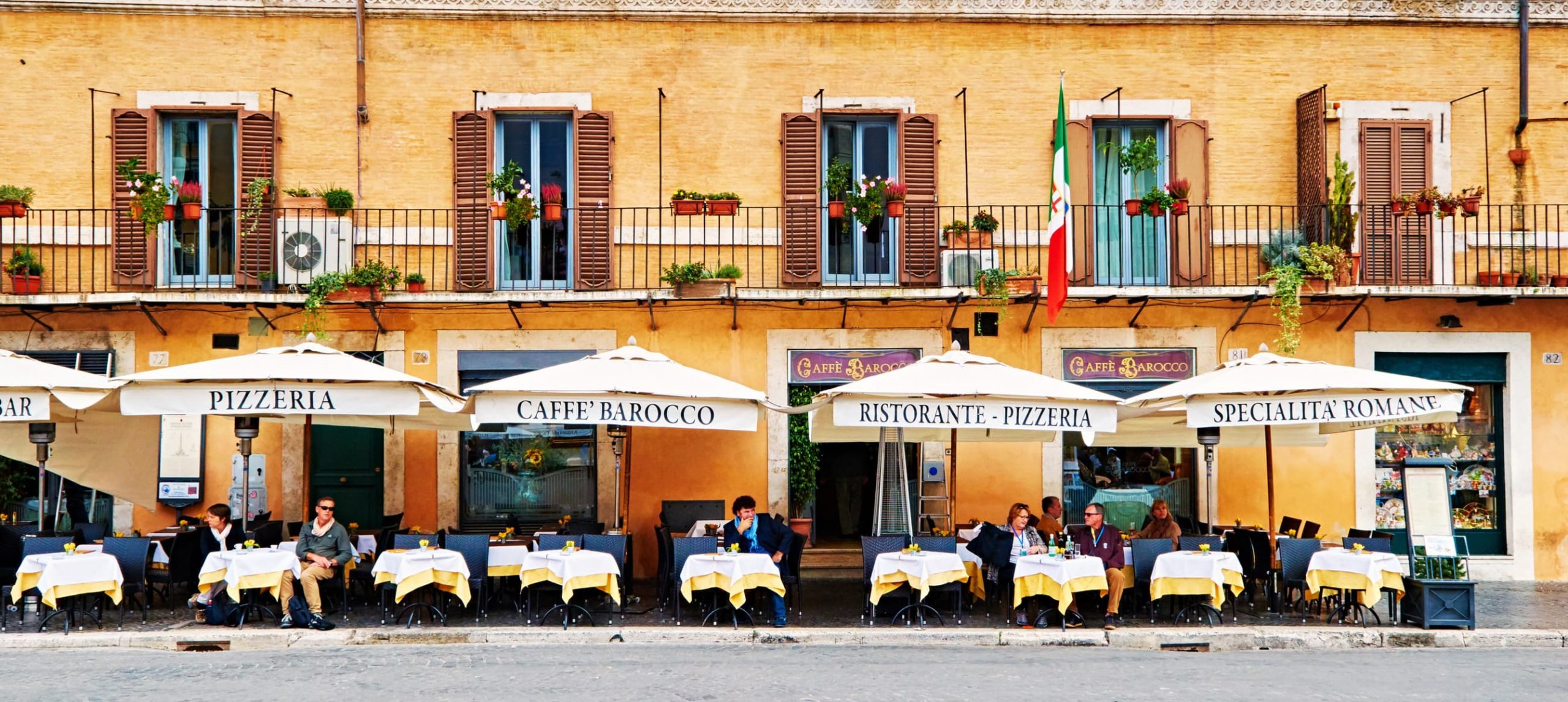With food-loving travelers in mind, we’ve created a guide showcasing the best food to try in Rome — from cacio e pepe pasta to porchetta, plus, curated tips on where to try each of these Roman classics.
After you’ve worked up an appetite by wandering around the city’s history-filled streets, there’s no better way to recharge your batteries than by enjoying a heartwarming meal, or simply a well-deserved snack, at one of Rome’s tantalizing eateries. Buon appetite!
Quick Jumplinks
What To Eat In Rome, Italy
Pizza al Taglio

🤤 Where To Eat
➤ Pizzarium ➤ Pizzeria la Boccaccia ➤ Volpetti Più ➤ Forno Campo de’ Fiori
Pizza al Taglio is the go-to snack for when you’re adventuring into Rome and the hunger strikes. Baked in large rectangular trays and generally sold in slices by weight (pizza al taglio translates to “pizza by the slice”), this pizza variety is mostly a takeaway street food, often eaten outside the pizzeria or in a nearby piazza.
This popular Roman pizza comes in a variety of flavors, which range from classics like Margherita (tomato sauce, and mozzarella), to more creative ones loaded with toppings such as mushrooms, zucchini, smoked salmon, or black truffles.
While meandering your way through Rome, you’re likely to find places selling pizza al taglio around every corner. All of the pizzerias look pretty similar, so how does one avoid tourist traps and choose the right spot to eat? A good tip is to avoid eateries that display pictures of their pizza on their front door or offer special price combos with soda and a dessert.
Just remember that the authentic pizza al taglio is priced by the kilo, and never pre-cut.
Saltimbocca alla Romana
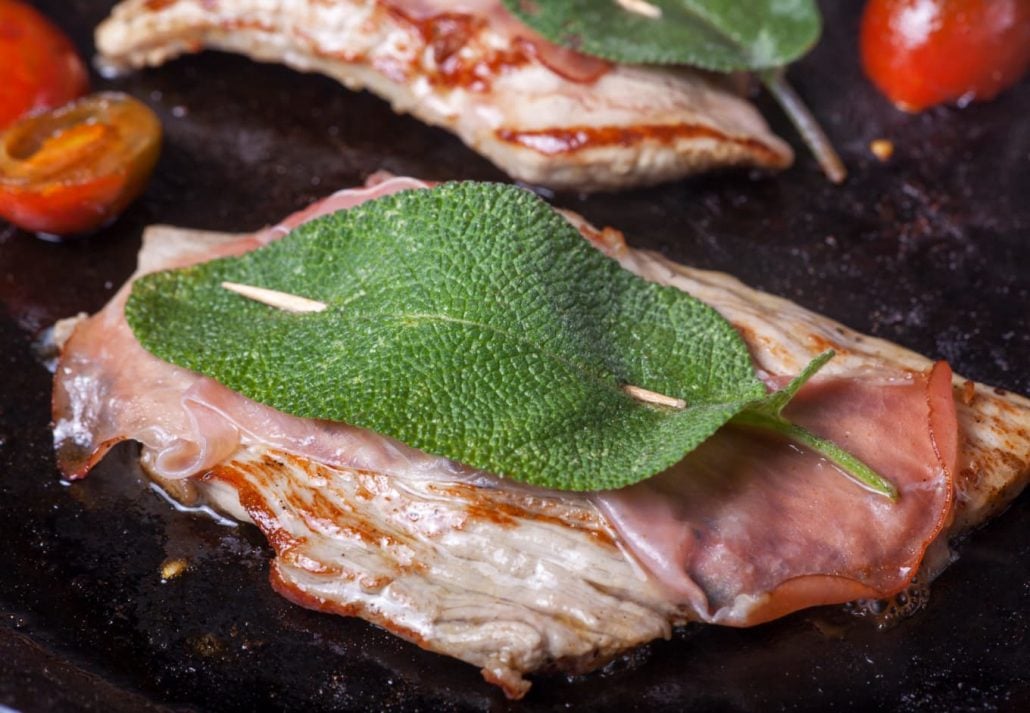
🤤 Where To Eat
➤ La Amatriciana Restaurant ➤ Otello Alla Concordia ➤ Armando al Pantheon
Believed to have originated in Brescia, a Lombardian city flanked at the foot of the Alps, saltimbocca alla Romana curiously remains the most famous food to try in Rome, much like carbonara pasta. The dish consists of pan-fried veal cutlets, that have been wrapped with prosciutto and fresh sage, and then sautéed in white wine.
Regardless of its area of origin, this staple Italian dish is succulent, tender, and tantalizes the tastebuds with a pleasant combination of unique flavors. Its name, by way, comes from the words “salti in bocca”, meaning “leap into the mouth”, a reference to how delicious the veal cutlets are!
Spaghetti alla Gricia
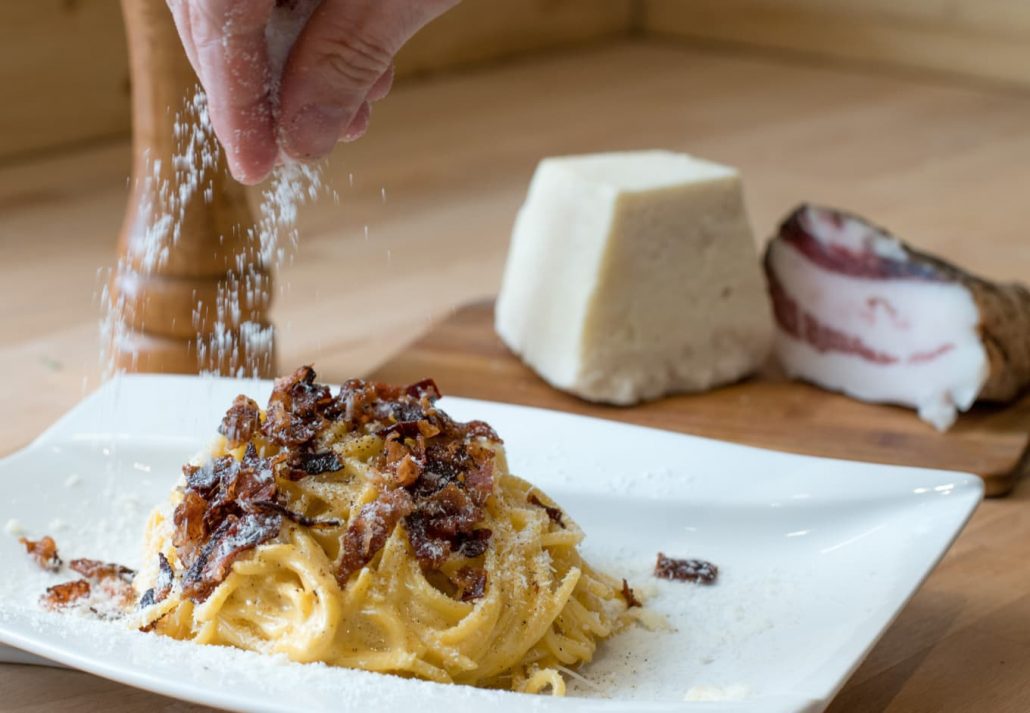
🤤 Where To Eat
➤ Armando al Pantheon ➤ Trattoria Da Cesare al Casaletto ➤ Osteria Bonelli ➤ Roscioli
Carbonara might be Rome’s best-known pasta dish, but spaghetti alla gricia is equally delicious and a must-try for travelers visiting the city. This type of pasta also features the unique flavors of Pecorino-Romano, black pepper, and the guanciale — Italian-style bacon made from pork jowl or cheeks —, but unlike the Carbonara, it’s not prepared with freshly beaten eggs.
The gricia pasta is more “pork-oriented”, and the spaghetti is perfectly punctuated with bits of meat, and coated with the glossy fat from pork.
Tonnarelli Cacio e Pepe
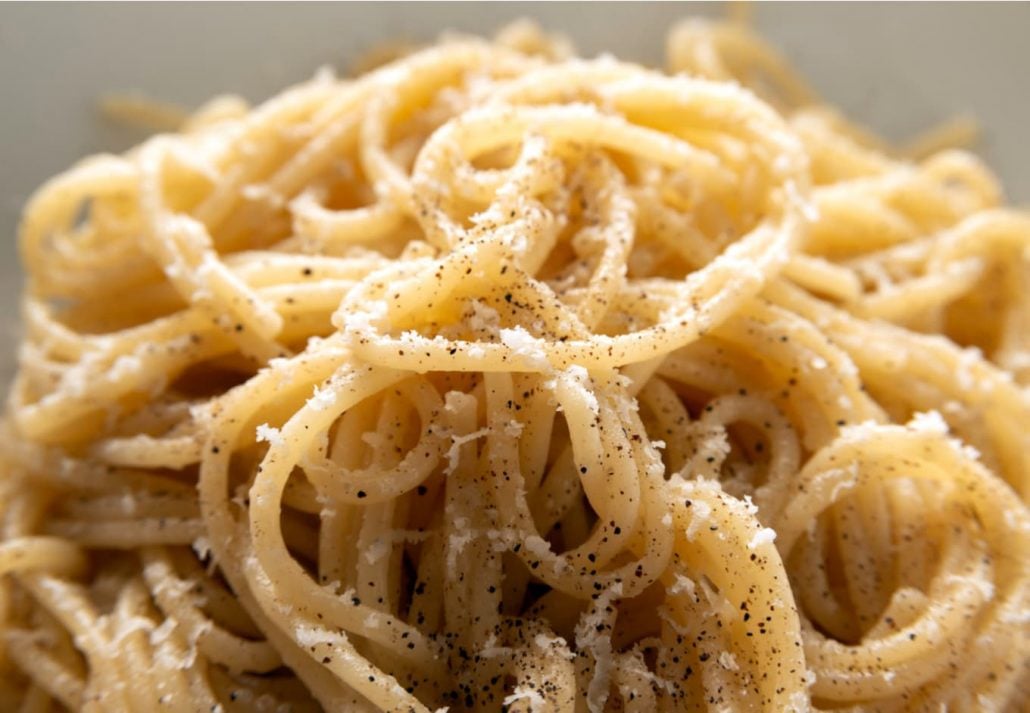
🤤 Where To Eat
➤ Lo’steria ➤ VyNIQUE Enoteca Regionale del Lazio ➤ Hostaria Romana
If you’re looking for some comforting food to try in Rome after a day of adventuring, then the legendary tonnarelli cacio e pepe, one of Italy’s oldest pasta dishes, will be your best bet.
In several Italian dialects, cacio e pepe means “cheese and pepper”, which are 2 of the 3 main ingredients used in the making of this rich and creamy dish. The other one is dried Tonnarelli, which is a traditional pasta from Rome.
Despite being a simple pasta dish with a semi-soft mild flavor, cacio e pepe has a small twist that comes from the freshly ground pepper and the grated Pecorino cheese.
Also, beware that cacio e pepe does not have cream or butter in it!
Carciofi alla Romana
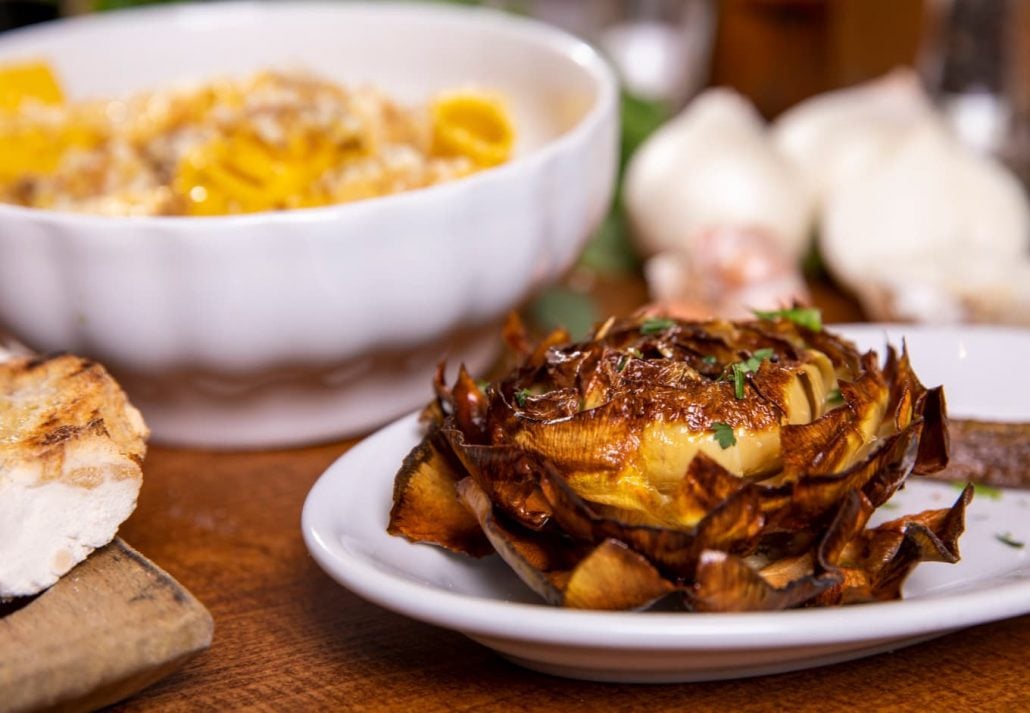
🤤 Where To Eat
➤ Da Enzo al 29 ➤ Da Bucatino ➤ Sora Margherita
Carciofi alla Romana is a typical dish from the Lazio region, where Rome is located. Served during springtime in practically every restaurant in the city, it consists of globe artichokes stuffed with garlic and wild mint and then braised until soft.
Tender and aromatic, the “Roman-style artichokes” can be served as a side dish or antipasti (appetizer).
Trippa alla Romana
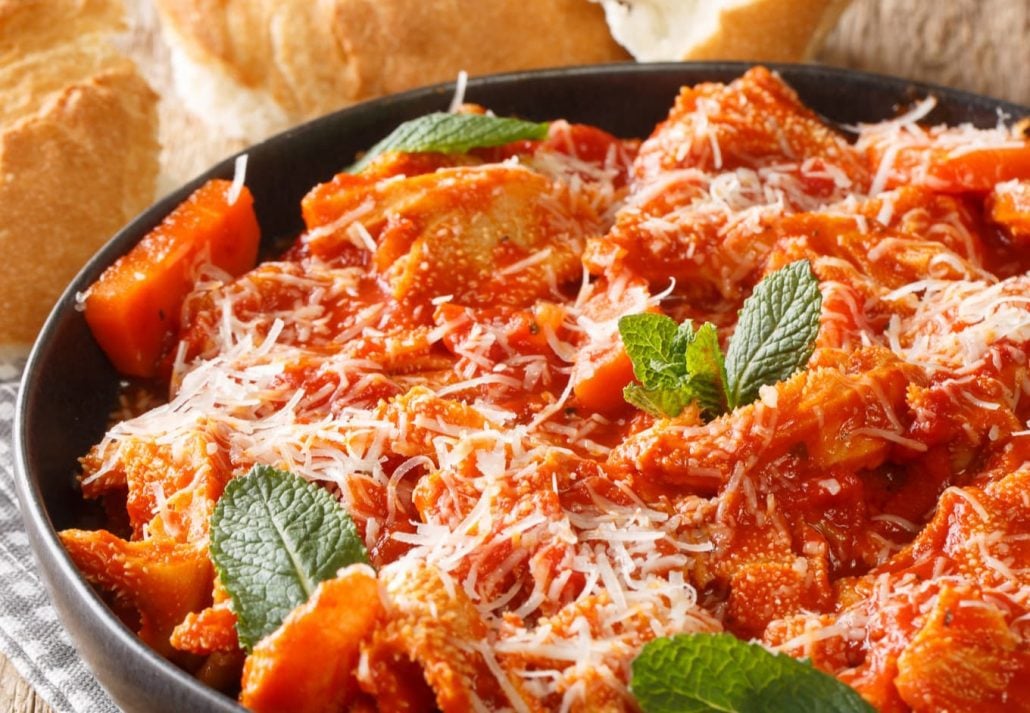
🤤 Where To Eat
➤ Osteria Tripperia il Magazzino ➤ Mercato di Testaccio ➤ Flavio al Velavevodetto
Traditionally served on Saturday at lunchtime in several trattorias in the Trastevere and Testaccio neighborhoods, trippa alla romana (Roman-style tripe) was once a popular dish among the poorest inhabitants of ancient Rome. This classic dish is made out of the quinto quarto (the “fifth quarter”), which is the less noble part of the butchered animal. At the time, each animal was divided into quarters (quarti) — and the first one (primo quarto) consisted of the best cuts, and was distributed to the nobility.
Despite being prepared with the least valuable part of the animal in ancient Rome — this dish is incredibly flavorful and it became one of the pillars of the local cuisine. The tripes are slowly simmered in chopped peeled tomato and then topped with plenty of grated Pecorino Romano cheese and a spoonful of chopped mint leaves to clean the palate.
Bucatini all’Amatriciana
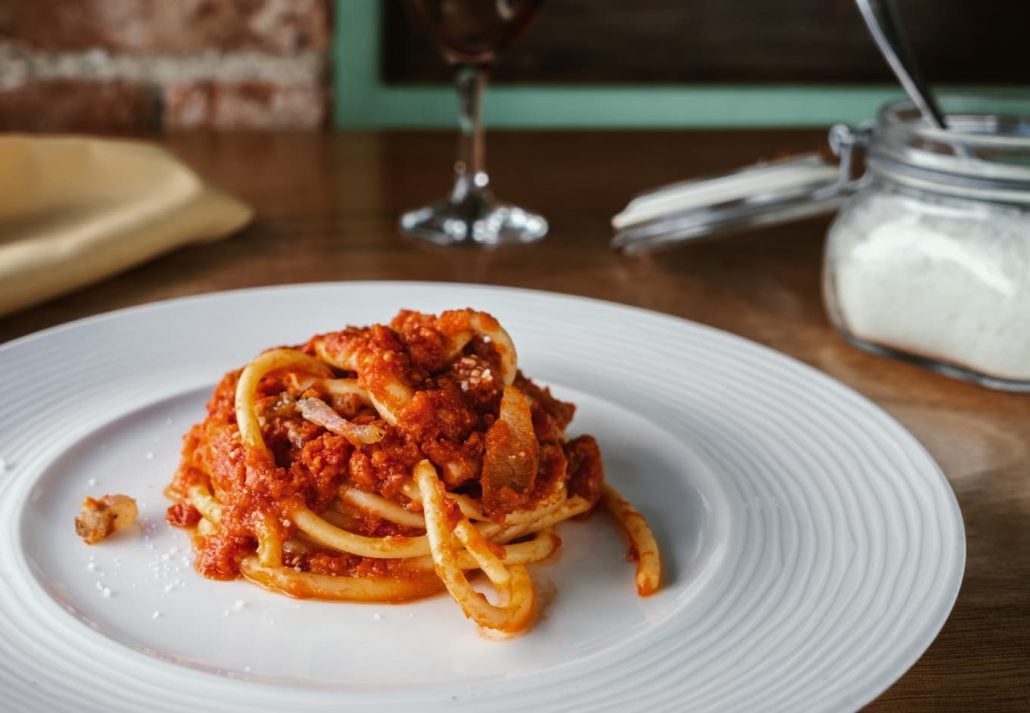
🤤 Where To Eat
➤ Salumeria Roscioli ➤ Trattoria Da Cesare al Casaletto ➤ La Tavernetta 48
The bucatini all’Amatriciana is one of the 4 hallmark pasta dishes of Rome alongside cacio e pepe, carbonara, and spaghetti alla gricia. Named after the hilly city of Amatrice, where it originated, the pasta was first prepared with just guanciale and Pecorino Romano, since shepherds used to bring cheese and pieces of pork jowl with them after long stays away from home. Tomatoes were added to the paste at the end of the 17th century.
Dating back to almost 1000 ago, this legendary pasta recipe is made up of guanciale (pork jowl), pecorino cheese, and tomatoes from San Marzano, as well as bucatini, a tubular-shaped pasta that resembles spaghetti. There’s no onion or garlic in the sauce, and the flavor of the pork cheek should be dominant.
Spaghetti Carbonara
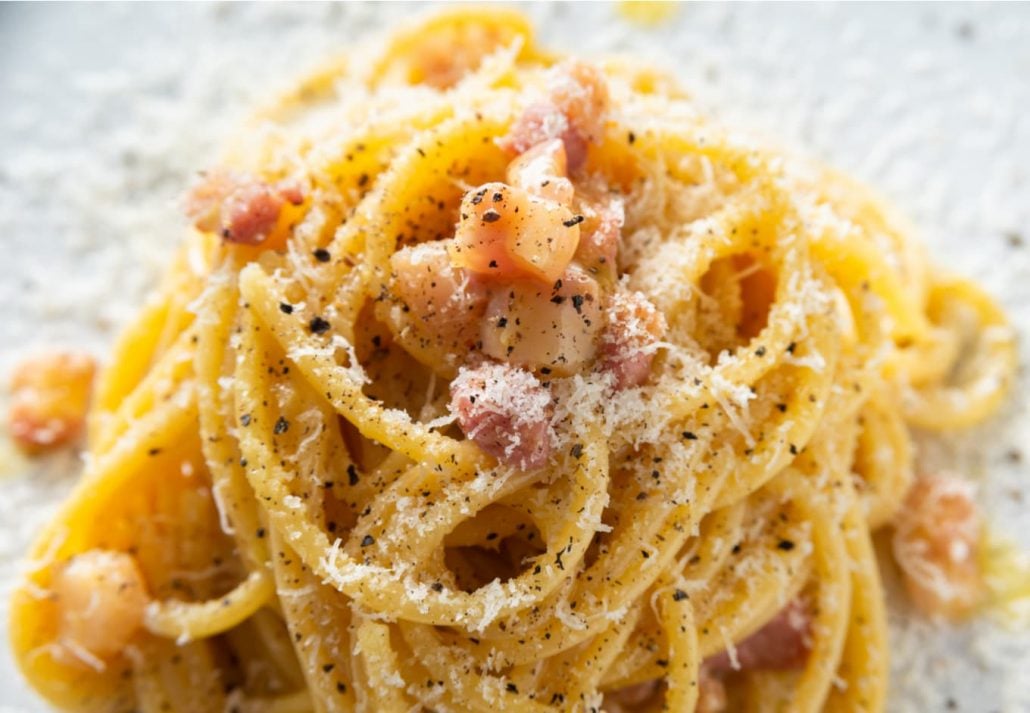
🤤 Where To Eat
➤ Grazia & Graziella ➤ Armando al Pantheon ➤ La Tavernaccia Da Bruno
When it comes to the top food to try when in Rome, carbonara can’t be left out of the list. While the origins of this iconic dish remain uncertain — some connect it to pasta cacio e uova, a Neapolitan dish, and others relate it to the liberation of Rome in 1944 —, of one thing we’re sure: this legendary pasta captivates the most inquisitive foodies thanks to flavor-packed raw beaten eggs, bits of guanciale, grated Pecorino Romano cheese, and black pepper.
Supplì
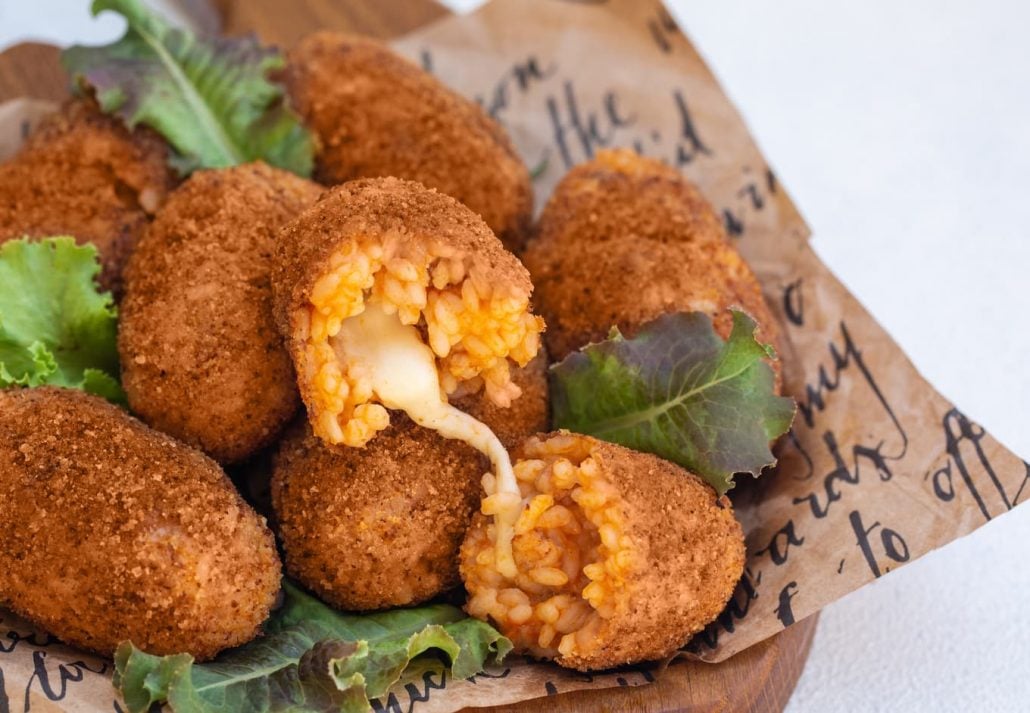
🤤 Where To Eat
➤ Supplizio ➤ Trapizzino ➤ Pizzarium
Once a sought-after street food to try in Rome in the early 19th century, supplì became one of the most famous appetizers of the Eternal City. They are similar (but not the same) as the Sicilian arancini and consist of a deep-fried rice ball (often arborio or carnaroli, the same rice used for risotto), coated with eggs and breadcrumbs and filled with tomato sauce and mozzarella cheese.
Commonly eaten in pizzerias across the city, this heavenly snack is also known as “supplì al telefono” (suppli on the telephone), in reference to the long strings of mozzarella that stretch between halves when you crack open the supplì, just like an old-fashioned telephone.
Porchetta
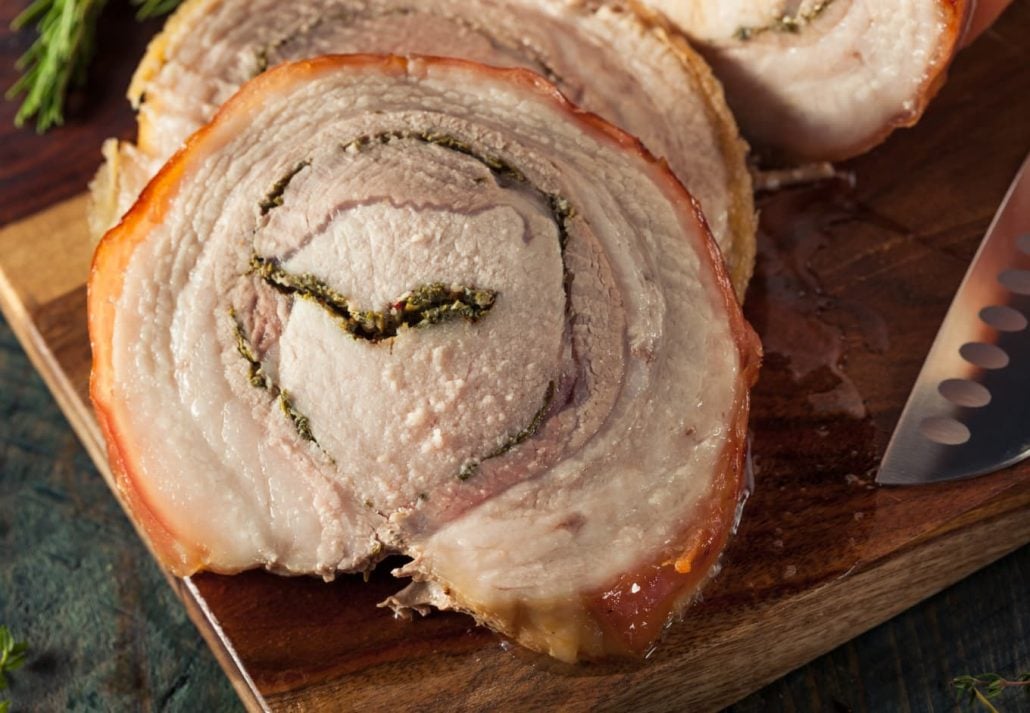
🤤 Where To Eat
➤ Angrypig Birretta e Porchetta ➤ La Vita E un Mozzico
Porchetta is considered, by many, the best food to try in Rome. Popular in central Italy since over 2,000 years ago (infamous emperor Nero was apparently a huge fan of porchetta), this staple dish is made from a whole suckling pig, which is deboned, layered with aromatic herbs, wrapped in fat and skin, spitted, and roasted over a wood fire for 6 to 8 hours. As it cooks, the skin forms a crispy, golden crust that protects the moisture of the meat while the spices become a flavorful paste within.
In several Roman eateries, the mouth-watering porchetta with its juicy meat and crispy crust is served inside a panino (fresh bun), like a sandwich.
Trapizzino
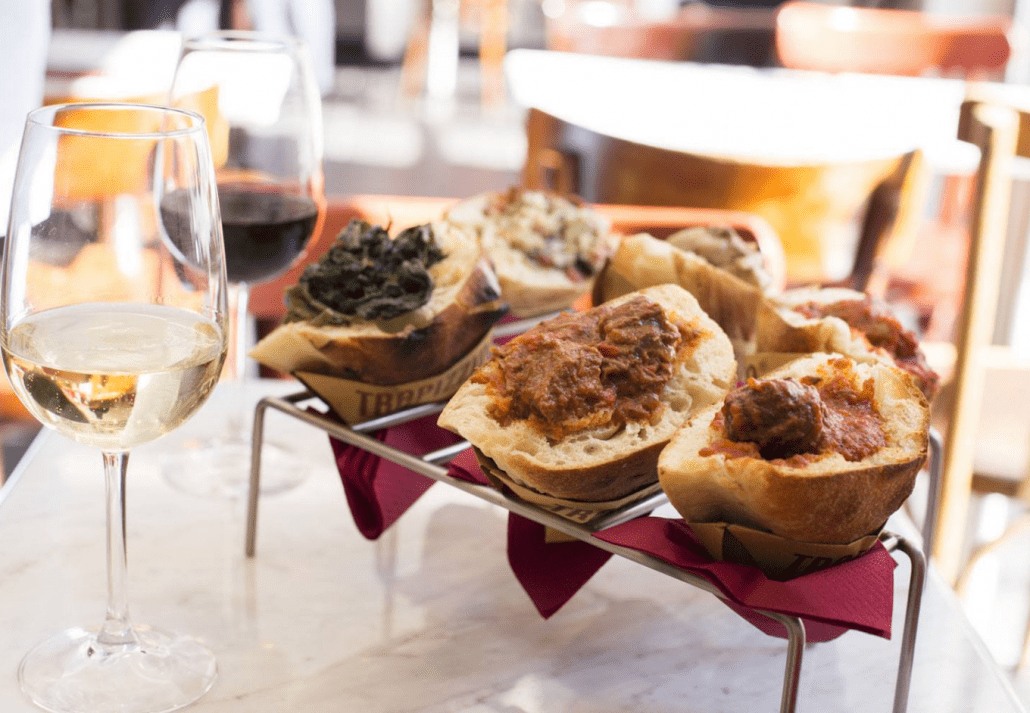
🤤 Where To Eat
➤ Trapizzino Testaccio ➤ Trapizzino Trastevere
Is it pizza, or a sandwich? Well, it’s both. Invented 10 years ago by pizzaiolo Stefano Callegari at his original pizza shop 00100 in the Testaccio neighborhood of Rome, trapizzino is a hybrid of pizza bianca and tramezzino, a triangular-shaped Italian sandwich made with crustless white bread and served in many bars. It is an absolute must for the food to try in Rome.
This half-sandwich, half-pizza treat is made out of a sourdough starter that is baked until it becomes soft on the inside and crunchy on the outside. Then, it’s cut in the form of a triangle, and filled with staple dishes of the Romans such as braised oxtail, tongue in green sauce, and pork belly. Unarguably, it is the most desirable street food to try in Rome!
Maritozzo

🤤 Where To Eat
No Roman food tour is complete without trying the maritozzo. Dating back to Rome in the Middle Ages, as the church allowed it to be eaten during the period of fasting during Lent, this dough-based bun sliced in half and packed with whipped cream is one of the most popular breakfast pastries in the city.
Fun fact: the word maritozzo derives from the Italian word marito, which translates into “husband” in English. The name references a traditional courting ritual that was popular in Rome during the 1800s. Back then, Roman suitors would propose — on the first Friday of March — by giving their future brides an engagement ring hidden inside a maritozzo. A Roman food with an interesting history, that’s for sure!
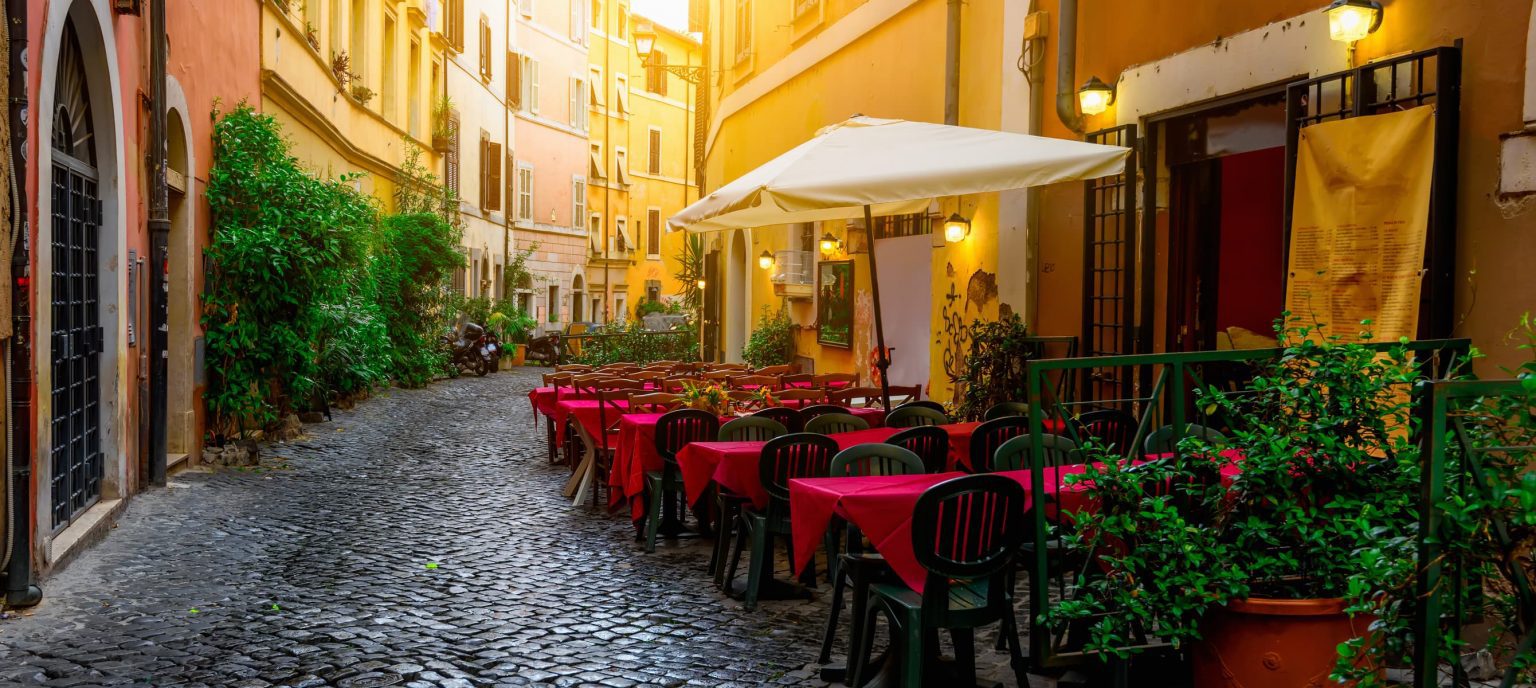 The Best Restaurants In Rome
The Best Restaurants In Rome
Frequently Asked Questions
Which food to try in Rome?
- Spaghetti Carbonara: A creamy pasta dish with guanciale (cured pork cheek), pecorino romano cheese, and black pepper.
- Saltimbocca alla Romana: Thin veal cutlets layered with prosciutto and sage, cooked in white wine.
- Pizza al Taglio: Roman-style pizza by the slice, perfect for a quick and satisfying lunch.
- Supplì: Fried rice balls filled with mozzarella cheese and tomato sauce, a popular street food.
- Cacio e Pepe: Simple yet flavorful pasta with pecorino romano cheese and black pepper.
Any unique food to try in Rome?
- Jewish Fried Artichokes: Whole artichokes fried to crispy perfection, a specialty of the Jewish Ghetto.
- Abbacchio allo Scottadito: Milk-fed lamb chops grilled until crispy on the outside and tender within.
- Coda alla Vaccinara: A hearty oxtail stew simmered in tomatoes and herbs.
- Trippa alla Romana: Roman-style tripe cooked with vegetables and pecorino romano cheese.
- Maritozzi: Sweet breakfast buns filled with whipped cream or fruit jam.
Is there any vegetarian food to try in Rome?
- Pasta dishes like cacio e pepe or aglio e olio (garlic and olive oil).
- Vegetable side dishes like grilled artichokes or roasted vegetables.
- Suppli can sometimes be found with a vegetarian filling (like mushrooms).
- Pizza al taglio with various vegetable toppings.
Where can I find the best pizza in Rome?
Roman pizza is known for its thin and crispy crust. Look for pizzerias offering “pizza al taglio” (by the slice). Asking a local for their favorite spot is a great way to find hidden gems, but until then, here’s a guide on the best pizza places in Rome.
What is the signature food to try in Rome?
While Rome has several staple dishes, the city is best known for its 4 hallmark kinds of pasta: the carbonara, cacio e pepe, gricia, and amatriciana.
Is the food in Rome expensive?
The Roman food scene is quite diverse, with an unlimited variety of options for every taste and budget. In the city, you’ll find everything from Michelin-starred restaurants, which tend to be more expensive, to lesser-known trattorias that are perfect for budget travelers.
